Home>Furniture>Outdoor Furniture>How To Start A Patio Garden
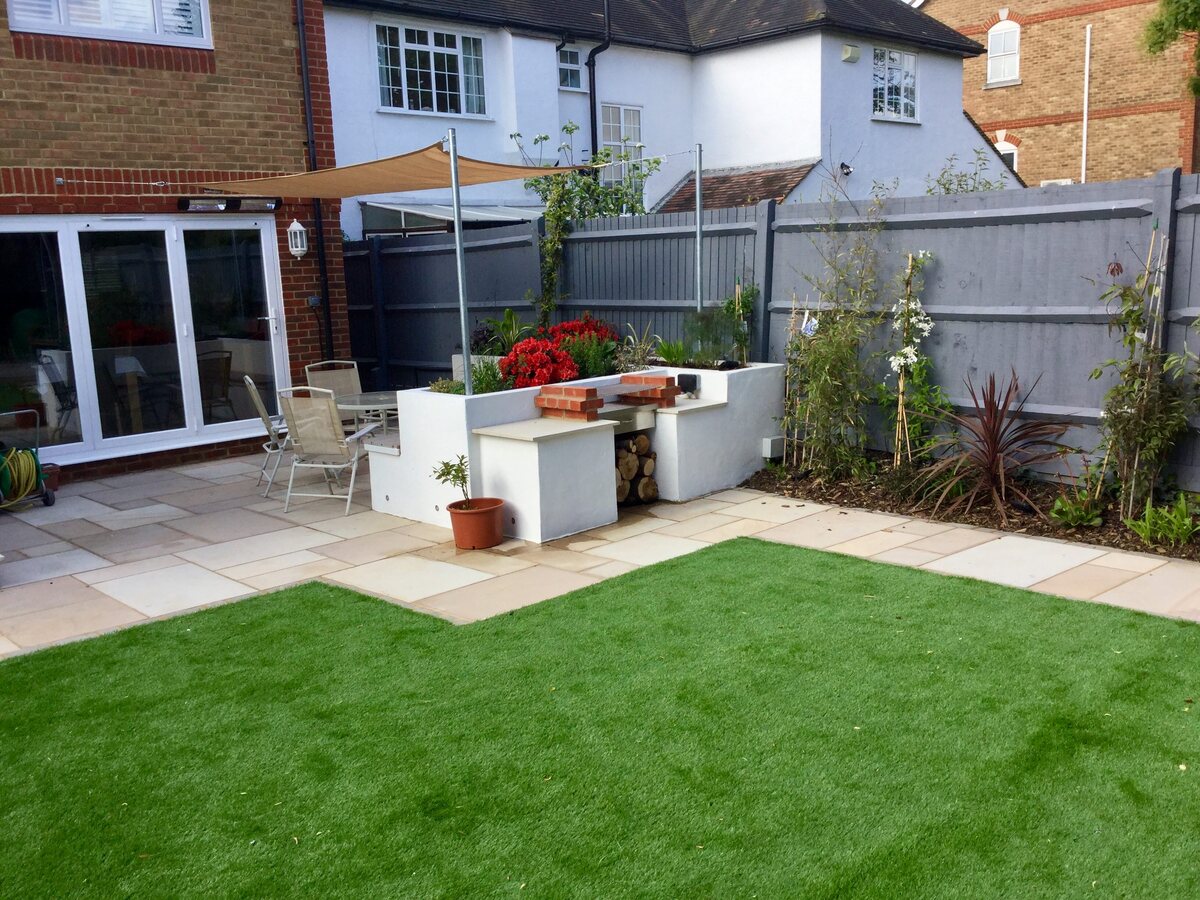

Outdoor Furniture
How To Start A Patio Garden
Modified: March 7, 2024
Learn how to start a patio garden and transform your outdoor space with stylish outdoor furniture. Discover tips, ideas, and advice for creating your own beautiful and functional outdoor oasis.
(Many of the links in this article redirect to a specific reviewed product. Your purchase of these products through affiliate links helps to generate commission for Storables.com, at no extra cost. Learn more)
Introduction
Welcome to the wonderful world of patio gardening! Whether you have a small balcony, a spacious terrace, or a cozy patio, you can transform it into a lush and vibrant garden oasis. Patio gardening allows you to enjoy the benefits of growing plants and flowers, even in limited outdoor spaces.
Not only does a patio garden provide you with a beautiful outdoor sanctuary, but it also offers the opportunity to grow and harvest your own herbs, flowers, and even vegetables. It’s a rewarding and enjoyable way to connect with nature, unleash your creativity, and create a relaxing outdoor retreat.
In this article, we will explore the various aspects of starting and maintaining a patio garden. From selecting the right location and considering sunlight and space availability to choosing suitable containers and selecting the perfect plants, we will cover everything you need to know to get started. So, grab your gardening gloves and let’s dive into the world of patio gardening!
Key Takeaways:
- Create a thriving patio garden by choosing the right plants, providing proper care, and enjoying the fruits of your labor. Embrace nature, savor the flavors, and share the joy with others.
- Maintain a healthy patio garden with proper watering, pruning, and pest control. Harvest your homegrown produce at the peak of perfection and celebrate the rewards of your hard work.
Read more: How To Start An Indoor Garden
Choosing a Location
The first step in starting your patio garden is selecting the right location. Consider the following factors when choosing where to set up your garden:
- Sunlight and Shade: Most plants require a good amount of sunlight to thrive, so choose a location that receives at least 6 hours of direct sunlight per day. Observe how the sun moves across your outdoor space and identify the areas that receive the most sunlight. Additionally, consider any shady spots where you can place shade-loving plants.
- Available Space: Evaluate the space you have available for your patio garden. Measure the dimensions and consider any restrictions or limitations, such as nearby structures or furniture. This will help you determine the number and size of containers or planters you can accommodate.
- Drainage and Watering Options: Ensure that the location you choose has proper drainage. If the area tends to accumulate water or doesn’t drain well, consider using raised beds or containers with drainage holes to prevent waterlogging. Also, assess the availability of a water source nearby for easy watering.
Once you’ve assessed the above factors, you can move on to the next steps in setting up your patio garden. Remember that the location you choose will play a crucial role in the overall success of your garden, so take the time to find the optimum spot that meets the needs of your chosen plants.
Assessing Sunlight and Shade
One of the key factors in the success of your patio garden is proper sunlight exposure. Different plants have varying sunlight requirements, so it’s important to assess the sunlight and shade conditions in your chosen location. Here are some tips to help you assess sunlight and shade:
- Observe your outdoor space throughout the day: Take note of how the sunlight moves across your patio or balcony. Are there areas that receive full sun for most of the day, or does shade cover certain spots for extended periods?
- Use a sun calculator or app: If you’re unsure about the exact hours of sunlight your chosen location receives, you can use a sun calculator or an app to determine the sun’s path and intensity at different times of the day and year.
- Familiarize yourself with plant sunlight requirements: Different plants have different sunlight needs. Some thrive in full sun, while others prefer partial shade. Before selecting your plants, research their sunlight requirements to ensure they will receive the appropriate amount of light in your chosen location.
- Consider the surrounding environment: Factors such as nearby buildings, trees, or other structures can cause shade and affect the available sunlight. Observe how these elements may cast shadows or block sunlight at different times of the day.
- Utilize shade-loving plants in shaded areas: If you have areas in your patio that receive less light, opt for shade-loving plants such as ferns, hostas, or impatiens. These plants thrive in lower light conditions and can add beauty to those shaded corners of your garden.
By assessing the sunlight and shade conditions in your chosen location, you can ensure that your patio garden will receive the right amount of light for your plants’ needs. This will help your plants grow and thrive, leading to a beautiful and flourishing garden space.
Determining the Available Space
Once you’ve assessed the sunlight and shade conditions in your patio or balcony, the next step is to determine the available space for your garden. Understanding the dimensions and limitations of your outdoor area will help you plan and select the right containers and layout for your plants. Here’s how you can determine the available space:
- Measure the dimensions: Use a measuring tape or ruler to measure the length, width, and height of your patio or balcony. This will give you a clear idea of the space you have to work with and will help you determine the size and number of containers or planters you can accommodate.
- Consider any physical restrictions: Take note of any physical restrictions in your outdoor space, such as pillars, railings, or other fixed structures. These elements may limit the placement and size of your containers, so it’s important to work around them while still maximizing your available space.
- Plan for walkways and seating areas: If you intend to have walkways or seating areas within your patio garden, leave enough space for comfortable movement and relaxation. Ensure there is ample space between containers and allow for pathways that are wide enough for easy navigation.
- Vertical gardening options: If you have limited floor space but ample vertical space, consider utilizing vertical gardening techniques. Wall-mounted planters, hanging baskets, or trellises can help maximize your growing area by utilizing vertical space and adding dimension to your garden.
By determining the available space in your patio or balcony, you can effectively plan and utilize the area to create a visually appealing and functional garden. Remember to strike a balance between the number of plants you desire and the available space, ensuring that your garden remains manageable and enjoyable to maintain.
Considering Drainage and Watering Options
Proper drainage and watering are essential for the health and success of your patio garden. Without adequate drainage, plants can suffer from waterlogged roots, leading to root rot and other problems. Here are some factors to consider when it comes to drainage and watering:
- Choose containers with drainage holes: When selecting containers for your patio garden, opt for ones that have drainage holes at the bottom. These holes allow excess water to escape, preventing water from pooling at the roots of your plants. If your chosen containers do not have drainage holes, make sure to create them yourself using a drill or other suitable tools.
- Use well-draining potting mix: Use a high-quality potting mix that is specifically formulated for container gardening. These mixes are designed to provide good drainage while retaining enough moisture for your plants. Avoid using garden soil, as it can become compacted and hinder drainage in containers.
- Avoid overwatering: Overwatering is a common mistake in patio gardening. Instead of sticking to a strict watering schedule, check the moisture level of the soil before watering. Stick your finger about an inch into the soil; if it feels dry, it’s time to water. If it still feels moist, hold off on watering for a day or two.
- Consider self-watering systems: If you’re concerned about keeping your patio garden adequately hydrated, consider investing in self-watering containers or systems. These containers have built-in reservoirs that provide a steady supply of water to the plants, reducing the risk of under or overwatering.
- Monitor water drainage: Keep an eye on how water drains from your containers. If you notice that water is not draining properly, adjust the amount of water you give to your plants or elevate the containers slightly to improve drainage.
By considering drainage and watering options in your patio garden, you can ensure that your plants receive the proper amount of water and avoid complications associated with poor drainage. Remember to strike a balance and find the right watering routine for your specific plants and environmental conditions.
Read more: How To Start A Garden Bed
Selecting Containers and Planters
The choice of containers and planters for your patio garden can greatly impact the overall aesthetics and functionality of your outdoor space. Here are some factors to consider when selecting containers:
- Material: Containers are available in various materials, including clay, plastic, ceramic, and metal. Each material has its own set of advantages and considerations. Clay pots are porous and allow for better airflow to the roots but can dry out quickly. Plastic pots are lightweight and retain moisture well but may not be as visually appealing. Consider your personal preference, the style of your patio, and the needs of your plants when choosing the material.
- Size: The size of the containers will depend on the type of plants you wish to grow and the available space. Ensure that the chosen containers have enough room for the plants’ roots to grow and allow for proper drainage. Larger containers generally provide more stability, allow for deeper root growth, and retain moisture better than smaller ones.
- Style: Consider the overall style and aesthetic of your patio when choosing containers. Opt for a consistent style that complements your outdoor decor and creates a harmonious look. You can choose from classic terracotta pots, sleek modern designs, or even repurposed containers for an eclectic touch.
- Mobility: Depending on your outdoor space’s layout and needs, consider the mobility of your containers. If you anticipate moving them frequently or arranging them in different configurations, choose lightweight containers or consider adding casters for easy maneuverability.
- Vertical gardening options: If you have limited floor space, vertical gardening containers or hanging planters can be a great solution. These allow you to utilize vertical space and add layers of greenery and dimension to your patio garden.
When selecting containers and planters for your patio garden, it’s important to strike a balance between functionality, aesthetics, and the needs of your plants. By choosing the right containers, you can create a visually pleasing and well-equipped space for your plants to thrive.
Considering the Patio’s Aesthetic Appeal
Your patio garden is not only a functional space but also an opportunity to enhance the overall aesthetic appeal of your outdoor area. By considering the patio’s aesthetic appeal, you can create a visually pleasing and inviting atmosphere. Here are some tips to help you enhance the aesthetics of your patio garden:
- Color coordination: Choose plants, flowers, and containers that complement the colors of your patio furniture and decor. Consider the color palette you want to achieve, whether it’s vibrant and bold or calming and pastel. Harmonizing the colors will create a cohesive and visually pleasing look.
- Texture and variety: Incorporate plants with different textures, leaf shapes, and sizes to add visual interest to your patio garden. Mix and match foliage plants with flowering plants to create a diverse and dynamic display. Consider the height and growth habit of the plants to create layers of greenery.
- Seasonal interest: Plan your patio garden to have a mix of plants that provide interest throughout the seasons. Choose evergreen plants or perennials that maintain their foliage year-round, and add seasonal flowering plants for bursts of color and fragrance.
- Accessories and decor: Enhance the patio’s aesthetic appeal by incorporating accessories and decor elements that complement your garden. This can include decorative pots, garden ornaments, lighting fixtures, and comfortable seating arrangements. Consider adding a trellis or pergola for climbing plants and to create a cozy and inviting atmosphere.
- Functional and decorative elements: Combine functionality with aesthetics by incorporating elements such as vertical gardening structures, built-in seating, or a small herb garden. These not only add visual appeal but also serve a practical purpose for your patio garden.
By considering the patio’s aesthetic appeal, you can create a beautiful and inviting space that you can enjoy and show off to your guests. Let your creativity shine and infuse your personal style into the design of your patio garden.
Choosing the Right Soil and Fertilizers
The foundation of a healthy and thriving patio garden lies in choosing the right soil and fertilizers. Soil quality plays a crucial role in providing essential nutrients and a suitable growing environment for your plants. Here are some factors to consider when selecting soil and fertilizers for your patio garden:
- Soil type: Depending on the types of plants you want to grow, consider the soil’s texture and composition. Most plants thrive in well-draining soil that retains moisture without becoming waterlogged. If your patio garden is in containers, opt for a high-quality potting mix specifically formulated for container gardening. These mixes typically include a blend of organic matter, such as peat moss or compost, to provide a nutrient-rich environment.
- Fertilizers: Fertilizers help replenish essential nutrients in the soil, promoting healthy plant growth and enhancing flowering and fruiting. Organic fertilizers, such as compost or well-decomposed manure, are a popular choice for patio gardens as they provide gradual nutrient release and improve soil structure. Alternatively, you can opt for slow-release granular fertilizers or water-soluble fertilizers specifically formulated for container plants.
- Fertilizer frequency: The frequency of fertilizing your patio garden depends on the type of plants and the fertilizer you choose. Some plants require more frequent feeding, while others may only need occasional fertilization. Follow the instructions on the fertilizer packaging and monitor your plants’ growth and appearance to determine if additional feeding is needed.
- Organic matter: Adding organic matter, such as compost or leaf mulch, to the soil can improve its fertility, moisture retention, and overall structure. This helps create a favorable environment for beneficial organisms, improves nutrient availability, and enhances the long-term health of your patio garden.
- Consider plant requirements: Different plants have varying nutrient needs. Research the specific nutrient requirements of the plants you intend to grow and choose fertilizers that provide the necessary elements in the right proportions.
By choosing the right soil and fertilizers for your patio garden, you can provide an optimal growing environment for your plants. Good soil and regular fertilization will contribute to healthy growth, vibrant blooms, and abundant yields, allowing you to enjoy the full potential of your patio garden.
Selecting Suitable Plants for the Patio Garden
Choosing the right plants for your patio garden is essential for creating a thriving and beautiful outdoor space. Consider the following factors when selecting plants:
- Climate suitability: Research the climate conditions in your area and choose plants that are well-suited to your specific climate. Some plants thrive in warm and sunny conditions, while others prefer cooler temperatures or shade. Select plants that can tolerate the temperature and weather patterns in your region.
- Space availability: Evaluate the available space in your patio garden and choose plants that fit well within that space. Consider the mature size of the plants and ensure they have enough room to grow and flourish without overcrowding.
- Light requirements: Different plants have varying light requirements. Take note of the sunlight and shade conditions in your patio garden and select plants accordingly. Some plants, like herbs and vegetables, prefer full sun and require at least six hours of direct sunlight per day, while others thrive in partial shade or shade.
- Container adaptability: If you are growing your patio garden in containers, choose plants that are well-suited for container gardening. Look for plants that have compact growth habits, do not require extensive root systems, and can thrive in the confined space of a container.
- Watering needs: Consider the watering requirements of the plants you select. Some plants, like succulents or Mediterranean herbs, are drought-tolerant and require less frequent watering. Others, like leafy greens or tropical plants, may need more consistent moisture. Ensure that the watering needs of your chosen plants align with your watering routine and the conditions of your patio garden.
- Personal preferences: Ultimately, choose plants that you personally enjoy and are excited to grow. Consider your favorite colors, scents, and tastes when selecting flowers, herbs, and vegetables for your patio garden. This will enhance your gardening experience and make the space more enjoyable for you.
By carefully selecting suitable plants for your patio garden, considering the climate, space availability, light requirements, and your personal preferences, you can create a harmonious and thriving garden space that brings you joy and satisfaction.
Start by choosing the right location for your patio garden. Consider the amount of sunlight, access to water, and protection from wind. This will help ensure your plants thrive in their new environment.
Read more: How To Start A Raised Bed Garden
Herbs for Patio Gardens
Herbs are an excellent choice for patio gardens due to their versatility, compact growth habits, and aromatic qualities. Whether you enjoy cooking with fresh herbs or simply appreciate their fragrance, here are some popular herbs that thrive in patio garden settings:
- 1. Basil: Basil is a classic herb that is easy to grow and adds a delightful aroma to your patio. It comes in different varieties, including sweet basil, lemon basil, and Thai basil. Basil enjoys ample sunlight and regular watering.
- 2. Rosemary: With its woody stems and aromatic needles, rosemary adds a lovely touch to any patio garden. It prefers full sun and well-drained soil. Harvest the sprigs and use them to enhance the flavor of your culinary creations.
- 3. Mint: Mint is a fast-growing herb that is perfect for patio gardens. Its refreshing scent and cooling properties make it a popular choice for teas, cocktails, and desserts. Mint thrives in semi-shade to full sun and appreciates consistently moist soil.
- 4. Thyme: Thyme is a low-maintenance herb that offers a delightful fragrance and a unique flavor profile for various culinary dishes. It prefers full sun, well-draining soil, and infrequent watering once established.
- 5. Parsley: This versatile herb is a biennial plant that can add freshness to your patio garden throughout the year. It grows well in sun to partial shade and requires consistent moisture. Harvest the leaves as needed for garnishing or culinary purposes.
- 6. Chives: Chives are known for their slender, grass-like leaves and delicate purple flowers. This herb thrives in sunny areas and prefers well-draining soil. Snip the leaves to add a mild onion flavor to your favorite dishes.
- 7. Oregano: Oregano is a robust herb with a strong flavor profile, making it a popular addition to Mediterranean and Italian cuisines. It prefers full sun and well-drained soil. Harvest the leaves when they are at their peak for the best flavor.
These are just a few examples of the many herbs that can thrive in a patio garden setting. Experiment with different herbs that align with your culinary preferences and gardening conditions. Herbs not only add beauty and fragrance to your patio garden but also offer the convenience of fresh and flavorful ingredients right at your fingertips.
Flowers for Patio Gardens
Adding flowers to your patio garden brings vibrant colors, captivating scents, and a touch of natural beauty to your outdoor space. Here are some popular flowers that are well-suited for patio gardens:
- 1. Petunias: Petunias are a favorite choice for patio gardens due to their wide range of colors and ability to bloom abundantly throughout the season. They come in various sizes, from smaller varieties for containers to larger ones for hanging baskets or borders.
- 2. Geraniums: Geraniums are known for their vibrant and long-lasting blooms. They thrive in containers, making them ideal for patio gardens. With their variety of colors and scents, geraniums can add a cheerful touch to your outdoor space.
- 3. Marigolds: Marigolds add a burst of warmth and vibrant hues to your patio garden. These annual flowers are easy to grow and provide continuous blooms throughout the season. Their pest-repelling properties make them a popular choice for companion planting.
- 4. Begonias: Begonias are versatile garden plants that thrive in shade or partial shade, making them ideal for patio gardens with less direct sunlight. They come in various forms, including fibrous-rooted and tuberous-rooted begonias, offering a range of colors and textures.
- 5. Gerbera Daisies: Known for their bold, colorful flowers, gerbera daisies are a popular choice for patio gardens. They prefer full sun or partial shade and well-drained soil. Their large daisy-like blooms add a cheerful and eye-catching element to your outdoor space.
- 6. Nasturtiums: Nasturtiums are edible flowers that not only add beauty to your patio garden but can also be a delightful addition to your culinary creations. They come in various shades of red, orange, and yellow, and their trailing or bushy growth habit makes them great for containers or hanging baskets.
- 7. Sweet Alyssum: Sweet alyssum is a fragrant flower that is often used as a groundcover in patio gardens. It produces small, delicate flowers that attract bees and butterflies. Its low-growing and spreading nature make it an excellent option for edging and borders.
These are just a few examples of the many flowers that can bring beauty and charm to your patio garden. Consider your color preferences, lighting conditions, and the overall aesthetic you want to achieve when choosing flowers. With the right selection, your patio garden will become a haven of color and fragrance.
Vegetables for Patio Gardens
Growing vegetables in a patio garden allows you to enjoy the satisfaction of fresh and homegrown produce right outside your door. Here are some vegetables that are well-suited for patio gardens:
- 1. Tomatoes: Tomatoes are a popular choice for patio gardens due to their versatility and high productivity. Opt for compact or bush varieties, such as cherry or patio tomatoes, which are specifically bred for small spaces. Provide support for vine varieties to maximize space and yield.
- 2. Peppers: Peppers, both sweet and hot varieties, can thrive in patio gardens. Compact pepper plants, such as patio or bell pepper varieties, are ideal for small spaces. Choose varieties that suit your taste preferences and grow them in containers that receive adequate sunlight.
- 3. Lettuce and Leafy Greens: Leafy greens like lettuce, spinach, and kale are perfect for patio gardens, especially if they receive partial shade during hot summer months. These fast-growing crops provide a continuous harvest of fresh and nutritious greens for your salads.
- 4. Radishes: Radishes are quick-growing root vegetables that can be harvested in a matter of weeks. They are well-suited for container gardening due to their compact size. Sow radish seeds directly in containers and enjoy the crisp and peppery flavor of homegrown radishes.
- 5. Herbs: While mentioned earlier, herbs like basil, mint, and chives are excellent choices for patio gardens. They not only add flavor to your culinary creations but also provide continuous harvest throughout the season.
- 6. Carrots: Carrots can be grown in containers with deep soil and good drainage. Opt for shorter or round varieties to accommodate the container depth. Enjoy the satisfaction of harvesting your own fresh and sweet carrots for salads or cooking.
- 7. Beans: Bush beans or dwarf varieties of pole beans can be grown in containers or vertically using trellises. These legumes are productive and provide a continuous harvest of tender and flavorful pods.
When choosing vegetables for your patio garden, consider their growth habit, container requirements, and sunlight needs. Many vegetable varieties have been specifically developed for small spaces, making them well-suited for patio gardens. Enjoy the pleasure of growing your own vegetables and savor the freshness of homegrown produce.
Caring for Your Patio Garden
Once your patio garden is set up with the right location, plants, and containers, it’s essential to care for it properly to ensure its health and longevity. Here are some key aspects of caring for your patio garden:
- Watering and Irrigation: Regular and proper watering is crucial for the success of your patio garden. Pay attention to the watering needs of your plants and adjust accordingly. Check the moisture level of the soil regularly and water deeply when needed. Consider using irrigation systems, such as drip irrigation or self-watering containers, to provide consistent moisture to your plants.
- Pruning and Trimming: Regular pruning and trimming help maintain the shape, health, and productivity of your plants. Remove dead or damaged leaves, stems, or flowers to promote new growth. Pinch back herbs to encourage bushier growth and harvest regularly to prevent them from becoming leggy.
- Controlling Pests and Diseases: Keep an eye out for pests and disease issues that may affect your patio garden. Inspect your plants regularly and take proactive measures such as handpicking pests, using organic pest control methods, or applying natural remedies. Provide proper air circulation by spacing the plants adequately to minimize the risk of fungal diseases.
- Feeding and Fertilizing: Monitor the nutrient needs of your plants and feed them accordingly. Follow a regular fertilization schedule using organic fertilizers or slow-release granular fertilizers. Consider adding compost or other organic matter to enrich the soil and provide a natural source of nutrients.
- Weeding and Mulching: Keep your patio garden free from weeds by regularly pulling them out. Mulch the soil surface with organic materials like wood chips or straw to suppress weed growth, conserve moisture, and regulate soil temperature. Mulching also adds a decorative touch to your patio garden.
- Monitoring and Adjusting: Continuously monitor the condition of your patio garden. Pay attention to any signs of stress, nutrient deficiencies, or changes in growth patterns. Adjust your care routine accordingly by providing more or less water, adjusting lighting conditions, or replenishing nutrients as needed.
By providing proper care and attention to your patio garden, you’ll create an environment where your plants can thrive and flourish. Regular maintenance and observation are key to preventing problems and ensuring a healthy and beautiful patio garden for you to enjoy.
Read more: How To Start A Patio Heater
Watering and Irrigation
Proper watering and irrigation practices are essential for maintaining a healthy and thriving patio garden. Here are some tips to help you effectively water and irrigate your plants:
- Know your plants’ water needs: Different plants have varying water requirements. Some prefer consistently moist soil, while others prefer a drier environment. Research the specific needs of your plants and group them together based on their watering requirements.
- Water deeply: When watering, ensure that the water reaches the root zone of your plants. It’s better to water deeply and thoroughly, allowing the water to penetrate the soil rather than just watering the surface. This encourages the plants’ roots to grow deeper and develop stronger structures.
- Water at the right time: Watering in the early morning or late afternoon is ideal as it allows the plants to absorb the water before the heat of the day. Avoid watering during the hottest part of the day to prevent evaporation and scorching of the leaves.
- Consider the container material and drainage: Different types of containers have varying water retention capacities. Plastic containers tend to retain moisture better than terracotta or clay pots, which can dry out more quickly. Ensure that your containers have proper drainage holes to prevent waterlogging and root rot.
- Utilize irrigation systems: Consider using irrigation systems such as drip irrigation or soaker hoses to provide a consistent and efficient water supply to your plants. These systems help deliver water directly to the root zone, minimizing water loss through evaporation.
- Monitor soil moisture: Check the moisture level of the soil regularly by inserting your finger into the soil up to the first knuckle. If it feels dry, it’s time to water. If it feels moist, hold off on watering for a day or two. Avoid overwatering, as it can lead to root rot and other issues.
- Adjust watering based on weather conditions: During periods of high heat or strong winds, plants may require more frequent watering. Similarly, during cooler and rainy periods, you may need to reduce the frequency of watering. Pay attention to the weather forecast and adjust your watering schedule accordingly.
- Consider self-watering systems: If you’re concerned about providing consistent moisture to your patio garden, consider using self-watering containers or systems. These containers have built-in reservoirs that supply water to the plants as needed, reducing the risk of over or under-watering.
Remember, the key to successful watering is to provide the right amount of water at the right time, taking into account the specific needs of your plants and the environmental conditions. By implementing proper watering and irrigation practices, you’ll promote the health and vitality of your patio garden, allowing your plants to flourish and thrive.
Pruning and Trimming
Pruning and trimming are important practices in maintaining the shape, health, and productivity of your patio garden. Proper pruning not only enhances the appearance of your plants but also promotes better airflow, reduces disease risks, and encourages new growth. Here are some tips to help you effectively prune and trim your patio garden:
- Know the pruning requirements of your plants: Different plants have different pruning needs. Some plants benefit from regular pruning to maintain their shape and vigor, while others require minimal pruning. Research the specific pruning requirements for each plant in your patio garden to ensure you prune them at the right time and in the correct manner.
- Invest in a quality pair of pruning tools: Good-quality and sharp pruning tools, such as bypass pruners or pruning shears, are essential for making clean cuts. Keep your tools clean and well-maintained to ensure optimal performance.
- Start with removing dead or damaged branches: Begin by inspecting your plants and removing any dead, diseased, or damaged branches. These can be pruned back to healthy growth or completely removed, depending on the severity of the issue. Pruning dead or damaged branches helps prevent the spread of diseases and promotes overall plant health.
- Consider the plant’s growth habit: Understanding the growth habit of your plants will guide your pruning decisions. Some plants, like herbs or compact shrubs, benefit from regular pinching or trimming to encourage bushier growth and prevent legginess. Others, like flowering plants, may require more selective pruning to remove spent blooms and encourage future flowering.
- Trim to shape and control size: Pruning can help maintain the desired shape and size of your plants. Trim back overly long or wayward branches to promote a more compact and aesthetically pleasing appearance. This is especially important for plants grown in containers, as they have limited space.
- End-of-season pruning: Towards the end of the growing season, consider a more extensive pruning to prepare your plants for winter. Remove any dead or dying foliage, thin out crowded areas, and shape the plants to promote better airflow and reduce the risk of disease or pest infestation.
- Observe growth patterns and adjust as needed: Pay attention to how your plants grow and adjust your pruning techniques accordingly. Some plants may require more frequent trimming, while others may need less. Regular observation and adjustment will help you maintain the desired appearance and health of your patio garden.
Pruning and trimming are essential maintenance practices that contribute to the overall health and aesthetics of your patio garden. By following proper pruning techniques and being attentive to the needs of your plants, you’ll create a well-maintained and visually pleasing outdoor space.
Controlling Pests and Diseases
Preventing and controlling pests and diseases in your patio garden is crucial to keep your plants healthy and thriving. Here are some tips to help you effectively manage pests and diseases:
- Monitor regularly: Regularly inspect your plants for any signs of pests or diseases. Look for visible damage, such as holes in leaves, discoloration, spots, or wilting. Early detection allows for prompt action and prevents further spread of pests or diseases.
- Handpicking: For small infestations, manually remove pests from your plants. Wear gloves and carefully pick off insects like aphids, caterpillars, or snails. Drop them into a bucket of soapy water to prevent them from returning to the plants.
- Natural predators: Encourage natural predators like ladybugs, lacewings, and birds to visit your patio garden. They feed on garden pests and help control their population. Attract them by planting flowers that provide nectar and pollen or by installing bird feeders and bird baths.
- Beneficial insects: Introduce beneficial insects, such as parasitic wasps or nematodes, to control specific pests. These insects prey on harmful pests and help keep their populations in check. You can purchase beneficial insects from garden centers or online suppliers.
- Organic pest control: Use organic pest control methods to minimize the use of harmful chemicals. Sprays made from natural ingredients like neem oil or insecticidal soap can help deter pests. Consult with local gardening experts or extension services for recommendations on organic pest control options suitable for your region.
- Cultural practices: Maintain good garden hygiene by regularly removing fallen leaves, weeds, or plant debris. Prune your plants to promote good airflow and reduce the risk of fungal diseases. Avoid overwatering as it can lead to root rot and attract pests.
- Crop rotation: Rotate your crops, especially for vegetables, to help prevent the buildup of pests and diseases in the soil. Different plant families have varying susceptibility to specific pests and diseases, so rotating them can disrupt the life cycle of these harmful organisms.
- Disease-resistant varieties: When choosing plants, opt for disease-resistant varieties whenever possible. These varieties are bred to withstand common diseases prevalent in certain regions. Look for plants labeled as “resistant” or do some research to identify disease-resistant cultivars.
- Consult with experts: If you are unsure about a particular pest or disease issue, consult with local gardening experts, extension services, or reputable garden centers. They can provide guidance on specific pest control methods and suggest appropriate treatments for the problems you are encountering.
By implementing these pest and disease control strategies, you can help ensure the health and vitality of your patio garden. Regular monitoring, early intervention, and the use of organic methods will promote a balanced ecosystem and allow your plants to flourish.
Harvesting and Enjoying the Fruits of Your Patio Garden
One of the most rewarding aspects of having a patio garden is the opportunity to harvest and enjoy the fruits of your labor. Here are some tips for harvesting and maximizing the flavors of your patio garden produce:
- Timing is key: Harvest your fruits and vegetables at the right time to ensure optimal flavor and quality. Different crops have different maturity signs, so learn about the specific harvest indicators for each plant. For example, tomatoes should be picked when fully ripe but still firm, while leafy greens like lettuce can be harvested when the leaves are young and tender.
- Handle with care: When harvesting, handle your produce with care to avoid damaging the plant or bruising the fruits. Use a sharp knife or gardening shears to gently cut or snip the fruits from the plant. Place them in a basket or tray to prevent them from getting crushed or bruised.
- Harvesting herbs: When harvesting herbs, select the sprigs or leaves you need, leaving enough foliage for the plant to continue thriving. Regularly harvesting herbs like basil or mint promotes bushier growth and ensures a continuous supply of fresh herbs throughout the growing season.
- Enjoying fresh produce: Nothing beats the taste of freshly picked fruits and vegetables. Incorporate your patio garden produce into your meals as quickly as possible to enjoy their maximum flavor and nutritional benefits. Experiment with different recipes and taste the difference of homegrown goodness.
- Preserving the harvest: If you have a surplus of produce, consider preserving them for future use. Options include freezing, canning, pickling, or drying. This allows you to enjoy your patio garden’s bounty even during the colder months when fresh produce may be scarce.
- Share with others: If you have an abundance of produce, consider sharing your harvest with friends, family, neighbors, or local food banks. It’s a wonderful way to spread the joy of homegrown goodness and foster a sense of community.
- Celebrate the harvest: Take a moment to appreciate the fruits of your labor. Host a meal or gathering in your patio garden to celebrate and enjoy the flavors of your homegrown produce. Share stories of your gardening journey, swap recipes, and revel in the satisfaction of growing and harvesting your own food.
Harvesting and enjoying the fruits of your patio garden is a gratifying experience. By following proper harvesting techniques and savoring the freshness of your homegrown produce, you can fully appreciate the rewards of your hard work and enjoy the delicious flavors nature has provided.
Read more: How To Start A Indoor Garden
Conclusion
Congratulations on creating your own thriving patio garden! The journey from choosing the right location to harvesting the fruits of your labor has been filled with learning, creativity, and satisfaction. Your patio garden has transformed into a beautiful and bountiful oasis right at your doorstep.
By carefully selecting suitable plants, considering the patio’s aesthetic appeal, and providing the necessary care, you have created a vibrant and inviting outdoor space. Your choices of herbs, flowers, and vegetables have added color, fragrance, and flavor to your patio, creating a serene sanctuary where you can relax, entertain, and connect with nature.
The watering and irrigation practices you’ve implemented ensure that your plants receive the right amount of water, while pruning and trimming have shaped and maintained their health and vitality. Through diligent pest and disease control measures, you’ve kept your patio garden thriving and free from harmful intruders.
Now, it’s time to savor the fruits of your labor. Harvest your produce at the peak of perfection, transforming them into delicious meals and enjoying the flavors of homegrown goodness. Whether it’s the burst of sweetness from a freshly picked tomato, the aromatic herbs that enhance your culinary creations, or the vibrant colors of your patio garden’s blossoms, relish every moment and share the joy with others.
Remember, your patio garden is not just a collection of plants, but a space that brings you closer to the beauty and wonder of nature. As you continue to care for and nurture your garden, it will continue to flourish and provide you with endless joy and satisfaction.
So, sit back, relax, and take pride in your thriving patio garden. Cherish the moments spent in this haven of greenery and share your knowledge and experience with others who dream of creating their own outdoor oasis. Your journey as a patio gardener has only just begun, and there are many more seasons of growth, beauty, and bountiful harvests to come. Happy gardening!
Frequently Asked Questions about How To Start A Patio Garden
Was this page helpful?
At Storables.com, we guarantee accurate and reliable information. Our content, validated by Expert Board Contributors, is crafted following stringent Editorial Policies. We're committed to providing you with well-researched, expert-backed insights for all your informational needs.
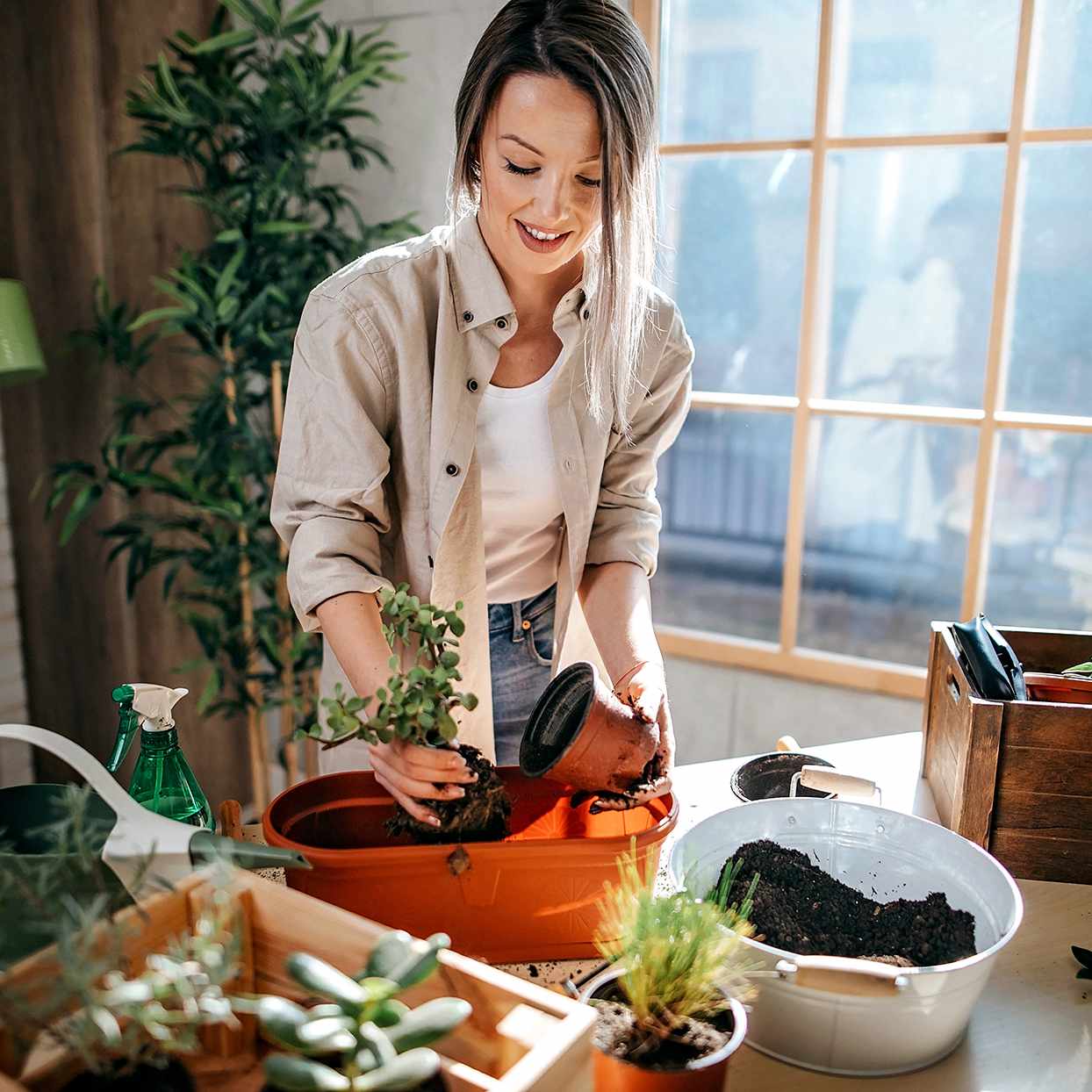
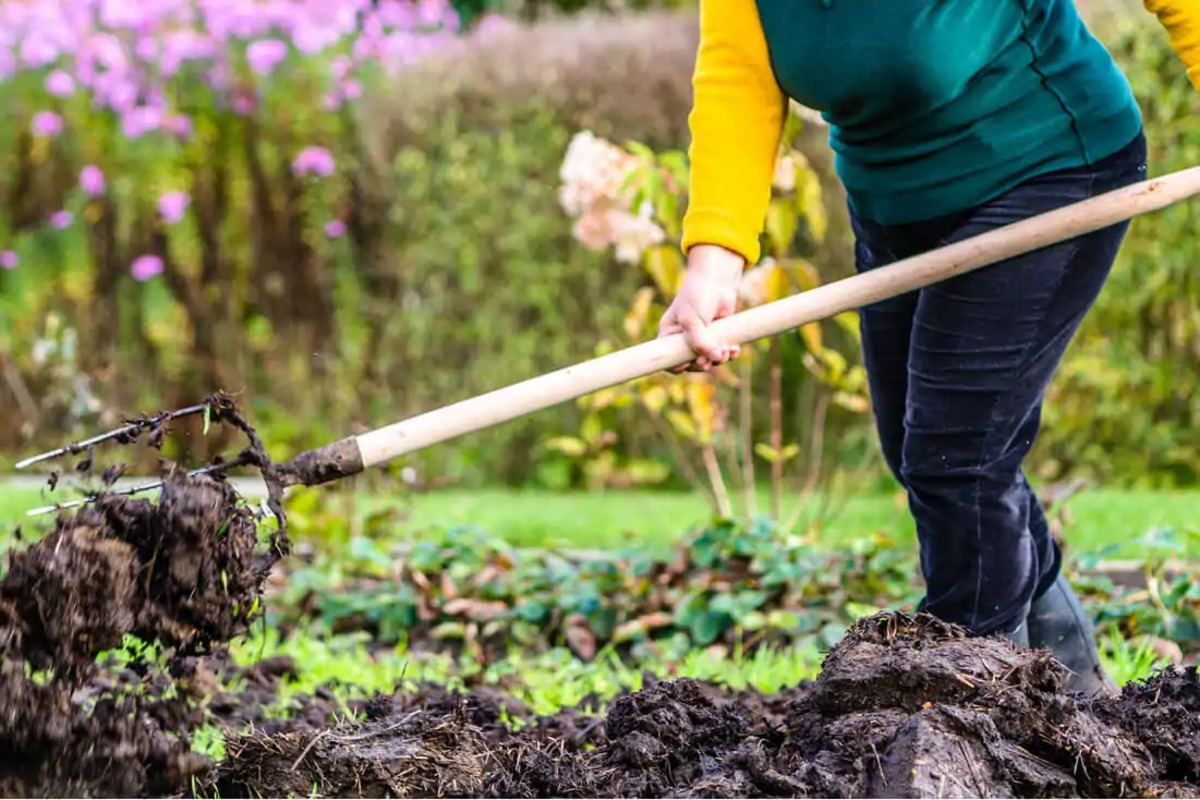
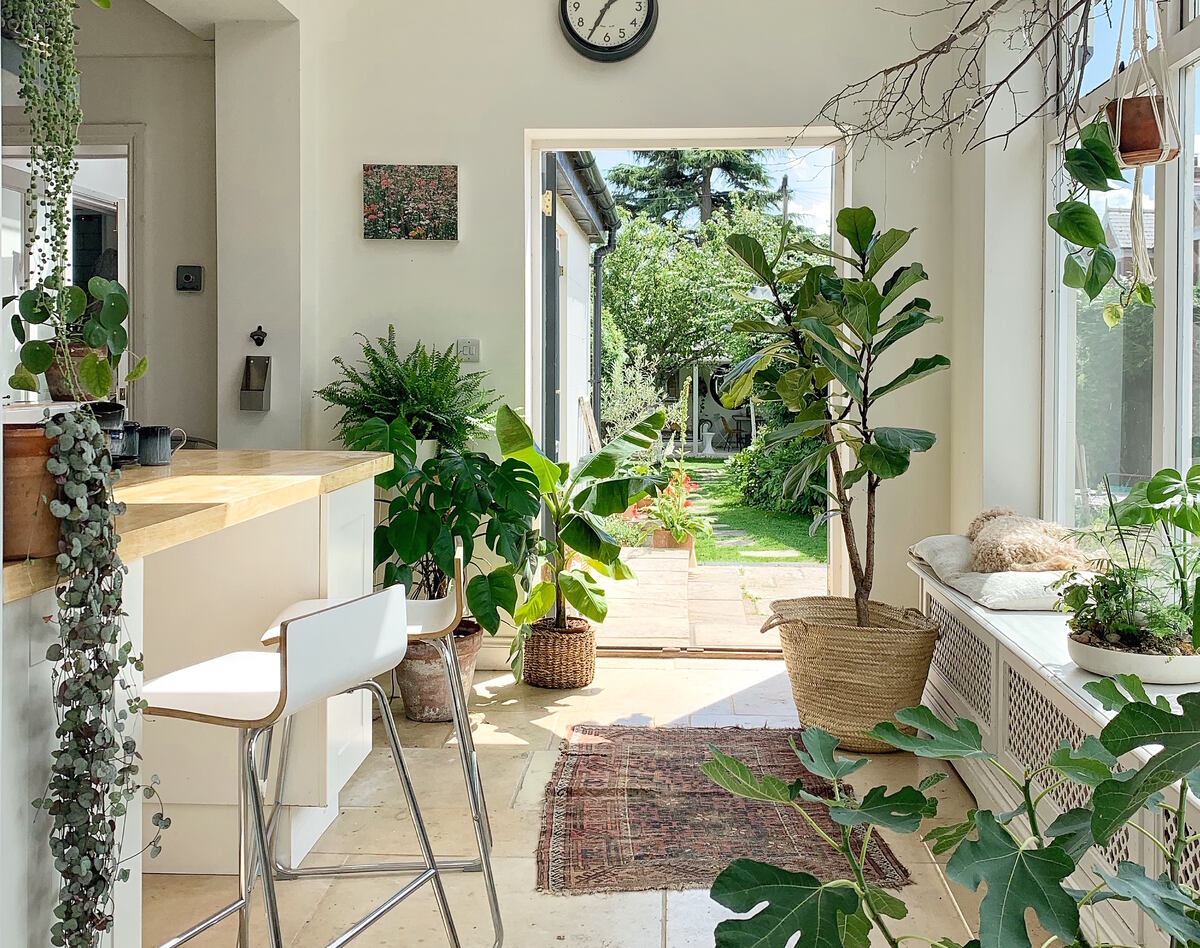
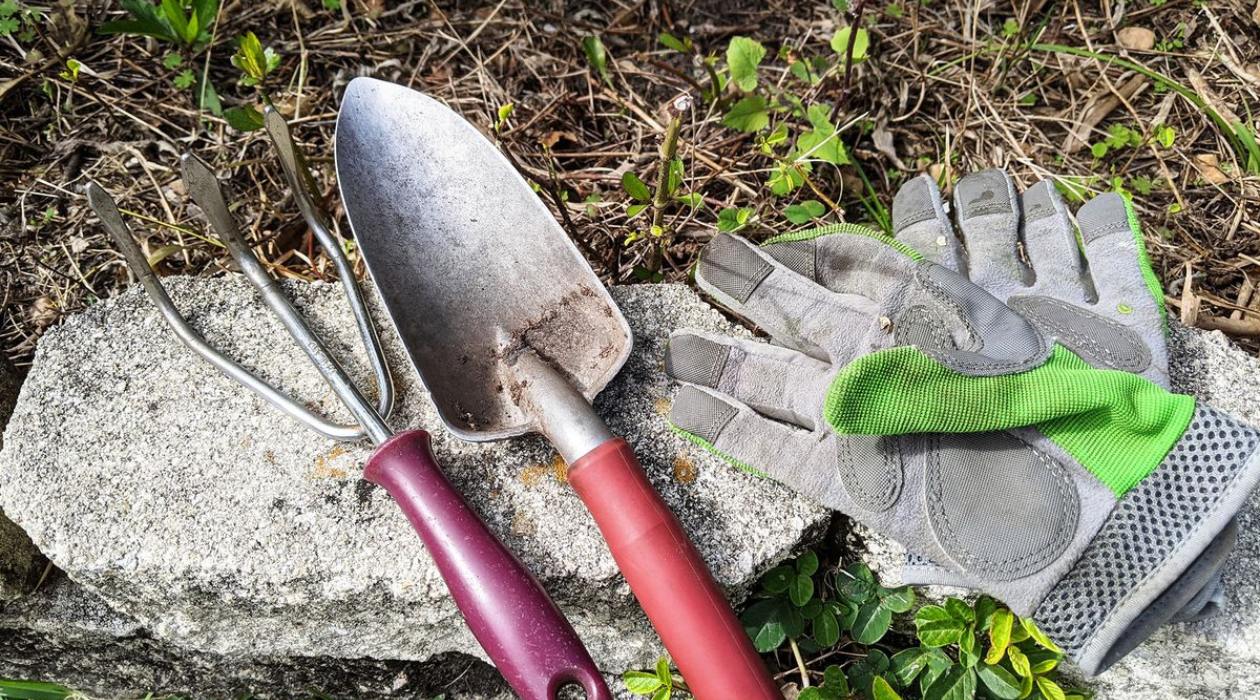
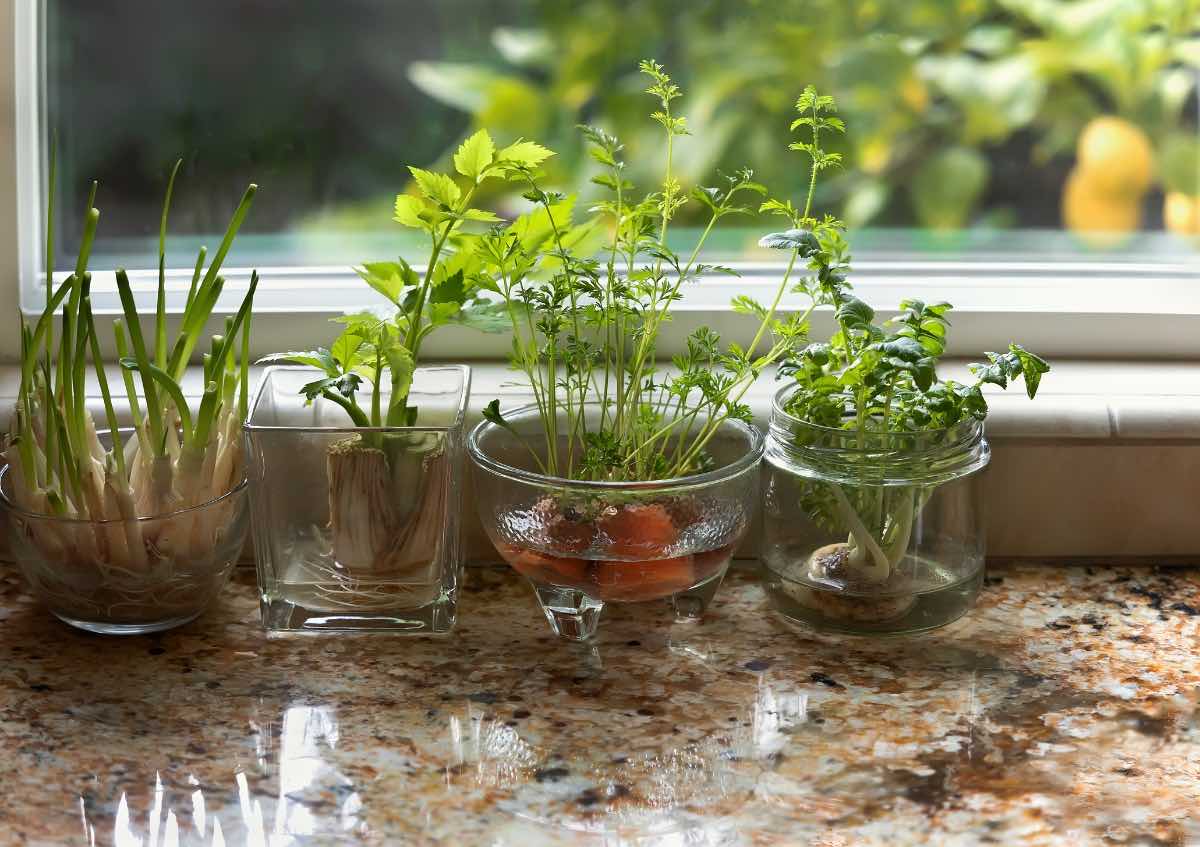
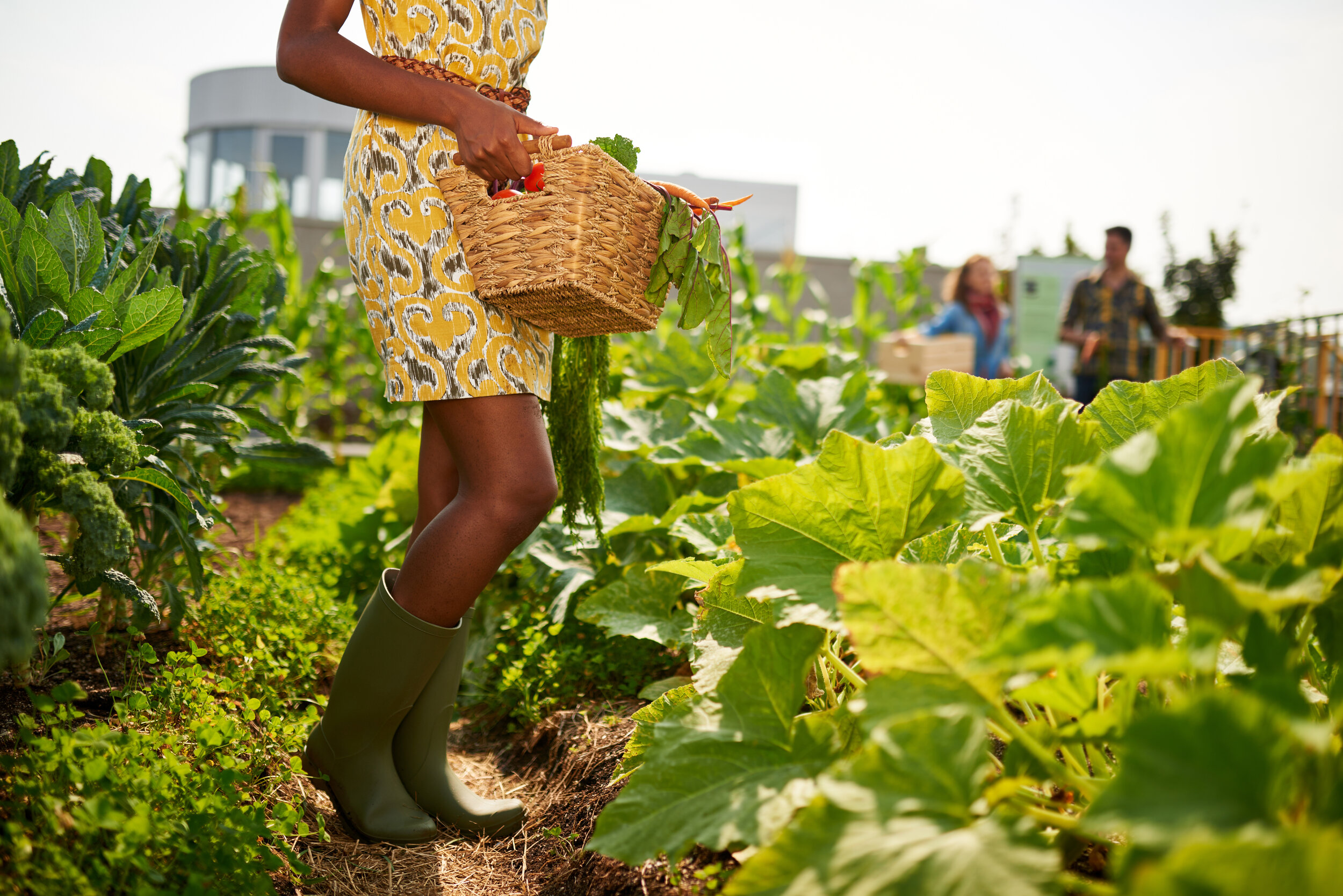
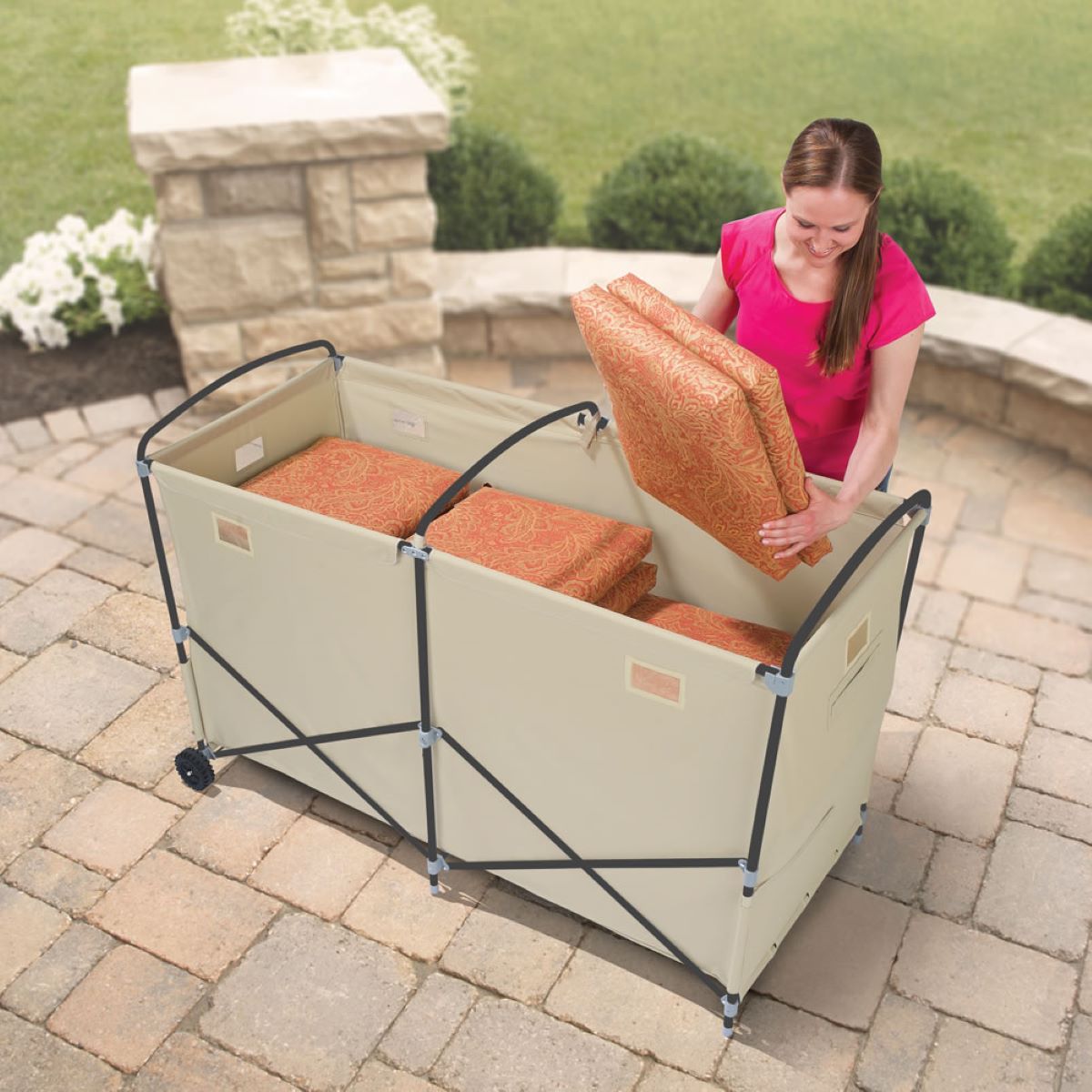
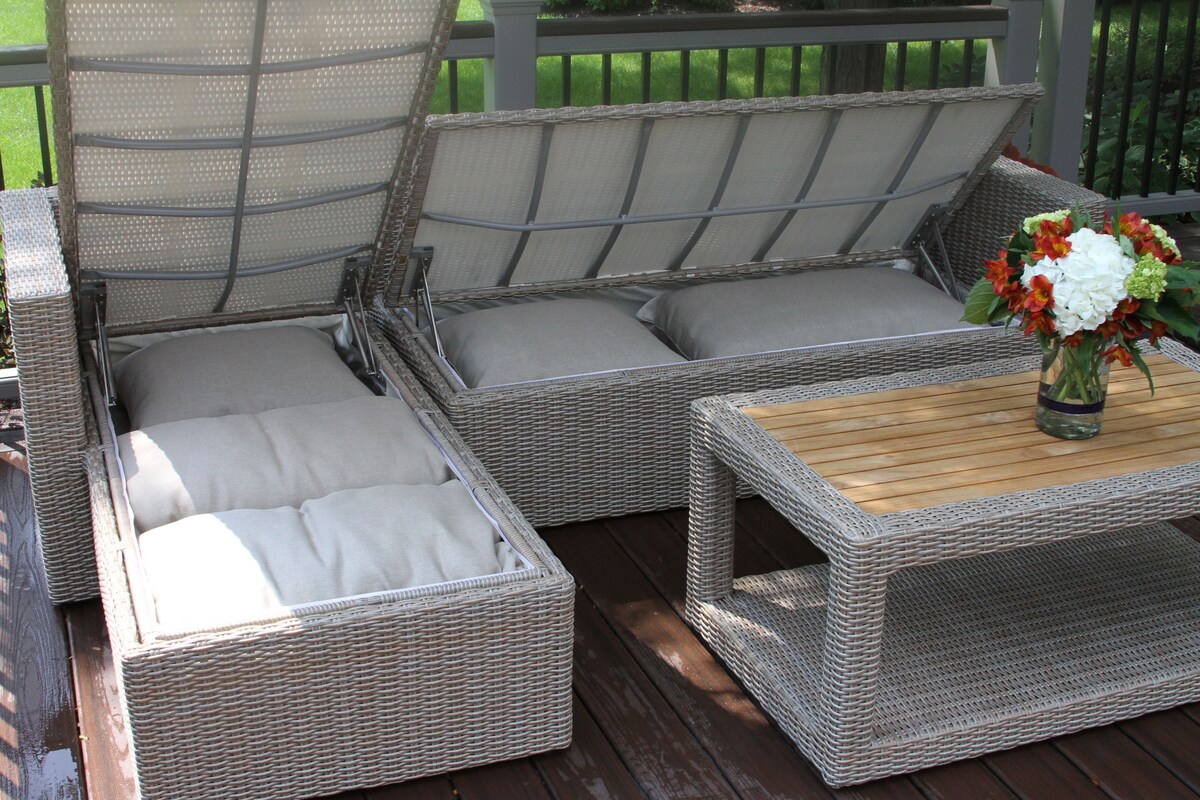
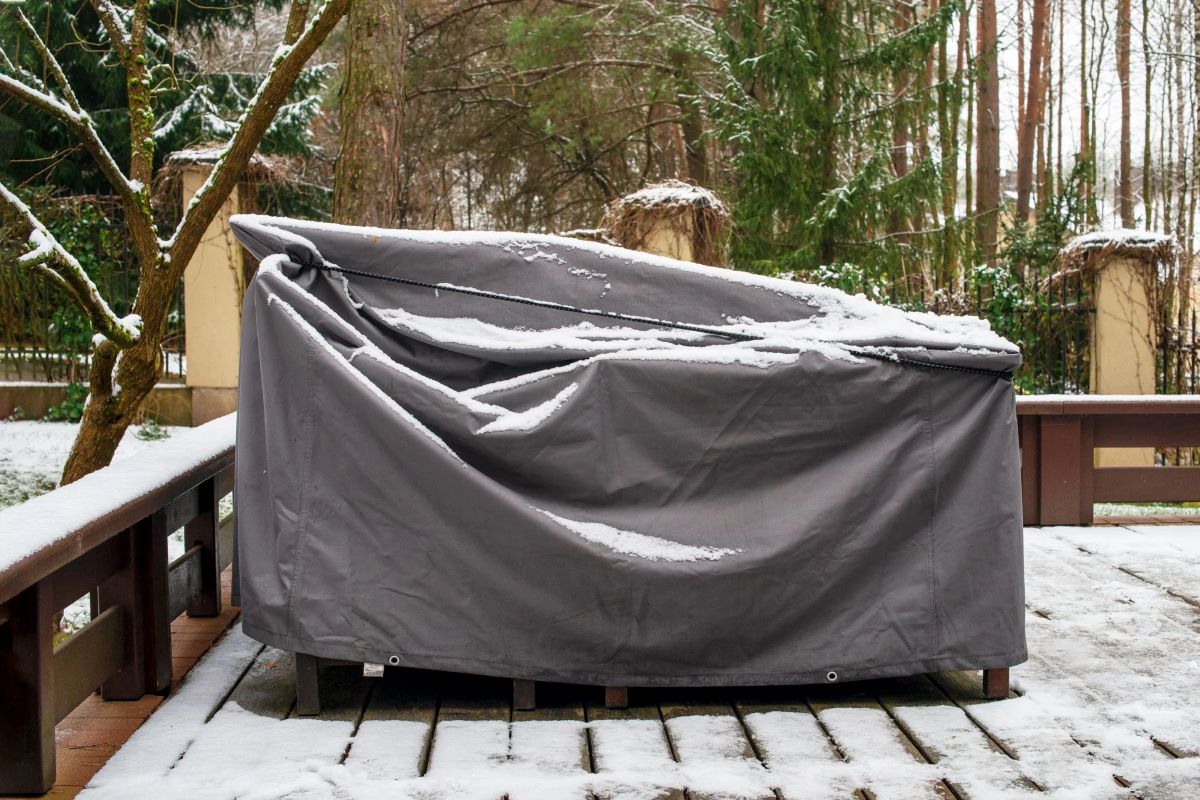

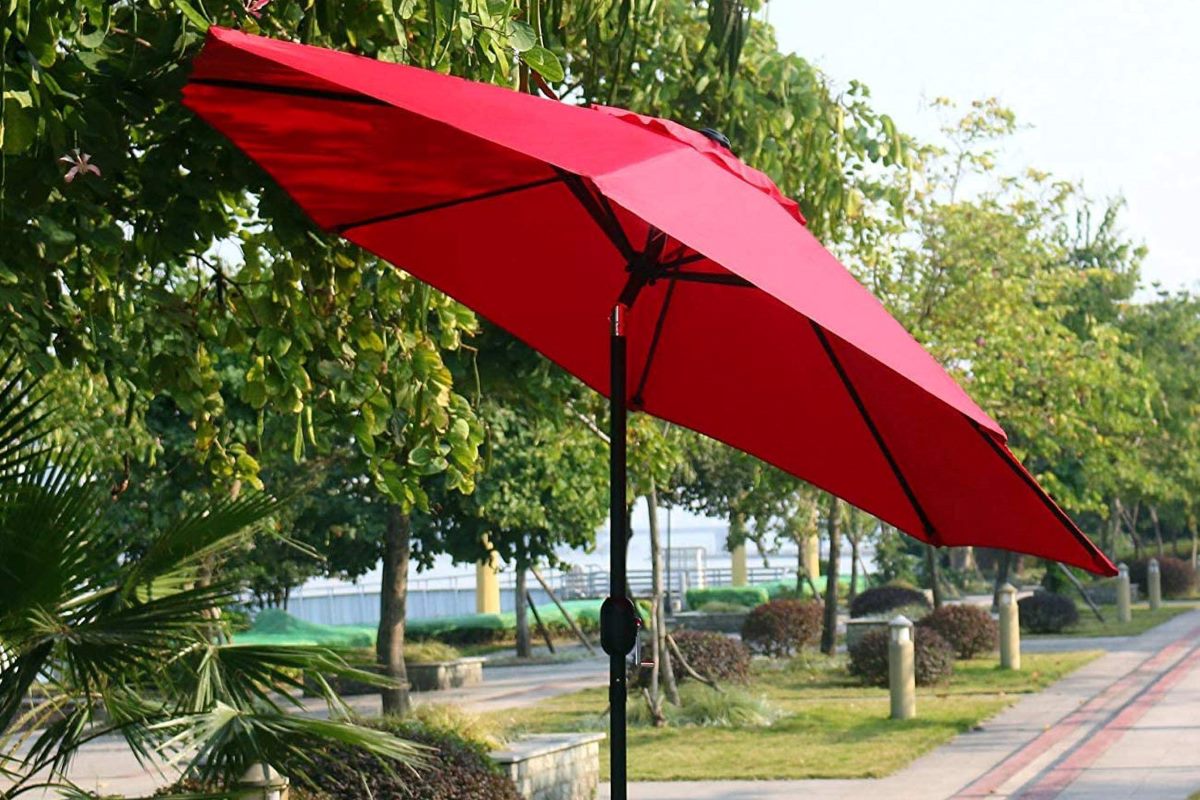

0 thoughts on “How To Start A Patio Garden”